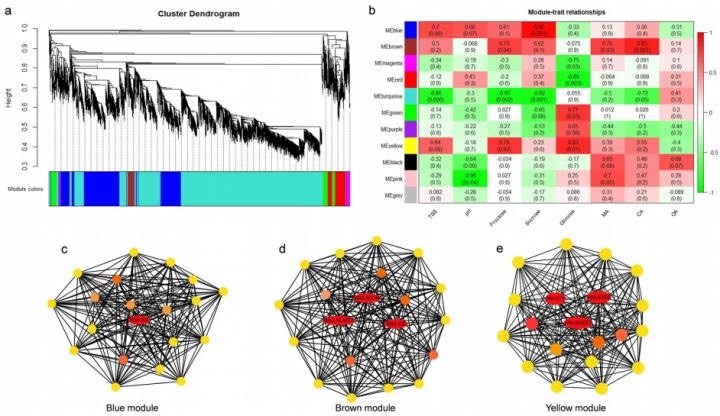The novel watermelon and melon cultivation project by researchers from the physiology team of the Zhengzhou Fruit Research Institute recently achieved a new advancement in controlling the metabolism of sugar and organic acid in watermelon fruit.

Gene networks and key candidate genes involved in sugar and organic acid regulation during watermelon fruit development. Image Credit: Zhengzhou Fruit Research Institute.
Changes in sugar and organic acid during fruit production were examined and main gene networks that regulate the metabolism of sugar and organic acid during fruit development were discovered.
The study findings offer a theoretical basis for the quality of watermelon breeding, which had crucial scientific importance for the advancement of the watermelon industry and for improving the level of watermelon breeding in China. The results have been published in the journals Horticulture Research and Scientia Horticulturae.
The sensory quality of watermelon fruit is defined by its sugar and organic acid content that influences the fruit’s taste during its growth and maturation.
The researchers used sweet watermelon “203Z” and sour watermelon “SrW” from the isogenic line of the fruit as samples. The genes and gene networks co-expressed using glycolic acid metabolism were analyzed using WGCNA analysis of metabolite and transcriptional data.
The team identified three gene expression networks, which included 2443 genes strongly associated with sugar and organic acid metabolism in watermelon fruits. They analyzed seven primary genes that form part of the sugar and organic acid metabolism of watermelon fruits by significance and qRT-PCR analysis.
Of the seven genes, Cla97C01G000640, Cla97C05G087120, and Cla97C01G018840 were found to be sugar transporters. Cla97C03G064990 was identified as a sucrose synthase. The Cla97C07G128420, Cla97C03G068240, and Cla97C01G008870 genes were strongly associated with malic acid and citric acid and were transporters and regulators of malic acid and citric acid.
Verification of these genes in the natural population has been completed, and the findings have revealed that the expressions of the seven genes were strongly positively correlated with the sugar and organic acid content of watermelon fruit.
Source:
Journal reference:
Umer, M.J., et al. (2020) Identification of key gene networks controlling organic acid and sugar metabolism during watermelon fruit development by integrating metabolic phenotypes and gene expression profiles. Horticulture Research. doi.org/10.1038/s41438-020-00416-8.